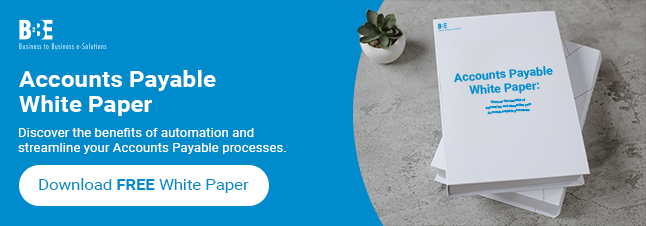Let’s face it: paperwork still dominates the accounts payable (AP) process for many businesses —but OCR data extraction is changing that. From supplier invoices to delivery notes and payment approvals, teams often spend hours just entering data manually line by line, field by field. It’s time-consuming, repetitive, and prone to errors.
That’s where OCR data extraction steps in to make working a whole lot easier.
First Things First: What Is OCR Data Extraction?
OCR stands for Optical Character Recognition. At its core, OCR data extraction is the process of scanning a document like a PDF invoice or an image file and turning it into editable, searchable data.
In the context of AP, that means the system can:
- Read invoice numbers, dates, line items, amounts
- Convert those fields into structured digital data
- Automatically feed that data into your finance or ERP system
No more manual typing, no more missed decimal points. Just clean, usable information pulled directly from the document itself. This is the kind of workflow finance teams dream of.
Visionnez notre vidéo ci-dessous :
Why OCR Data Extraction Makes a Difference
Traditional invoice processing relies heavily on manual input. That’s manageable when you’re processing a few invoices per week. But once your business starts scaling, the volume quickly becomes overwhelming.
Here’s what OCR data extraction can solve:
- Time wasted on data entry
- Inconsistent formats from different suppliers
- Delays caused by human error
- Invoices lost in overflowing inboxes or paper trays
By automating how you capture invoice data, your AP team can focus on reviewing exceptions, resolving issues, and improving supplier relationships instead of copying and pasting numbers all day.
It Supports Your Team in The Right Ways
OCR data extraction isn’t about replacing people with machines. It’s about reducing work that slows your team down. Think of it as a digital assistant that:
- Captures invoice data with high accuracy
- Flags missing or mismatched fields for review
- Works 24/7 without fatigue or distractions
When paired with AP automation, it turns what used to be a bottleneck into a seamless workflow. And that means fewer late payments, fewer errors, and better visibility over your payables.
The Benefits Speak for Themselves
Here’s what businesses typically see when they implement OCR data extraction as part of their AP process:
- Faster invoice turnaround times
- Improved accuracy and audit trails
- Lower processing costs per invoice
- Real-time insights into outstanding payables
It also helps build consistency when dealing with multiple suppliers who use different invoice formats whether it’s a scanned PDF, a faxed document, or a standard email attachment. In this era where efficiency is king, OCR can bring structure to the chaos.
If your accounts payable team still spends hours inputting data from supplier invoices, it’s worth exploring OCR data extraction. With less manual work and more reliable data, you can speed up approvals, reduce errors, and keep your financial operations running smoothly.
And as your business grows, tools like OCR help ensure your AP process can keep up without adding extra workload to your team. Download our Accounts Payable whitepaper to find out more.

